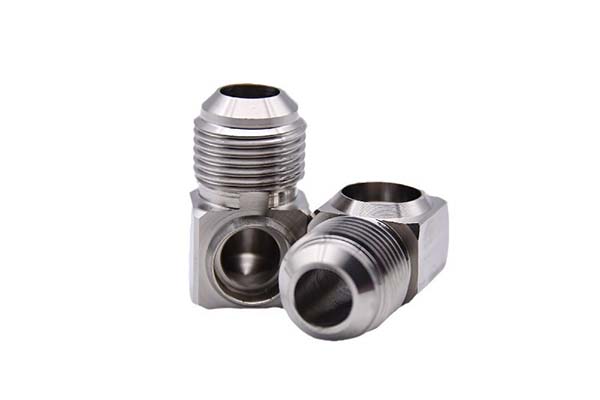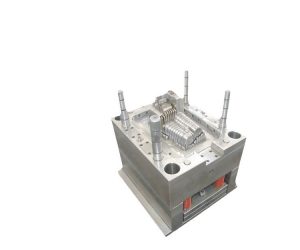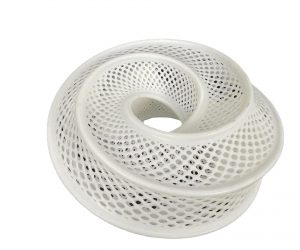This guide dissects the complex landscape of localized metal 3D printing services, offering a critical analysis of leading providers, technological intricacies, and the often-overlooked nuances crucial for project success. Navigating this field requires a sophisticated understanding beyond mere vendor selection.
I. Deconstructing the Metal Additive Manufacturing Ecosystem
A. The Unfolding Revolution of Localized Metal 3D Printing: A Paradigm Shift
The additive manufacturing revolution, far from a mere technological advancement, represents a fundamental shift in manufacturing paradigms. The proliferation of localized metal 3D printing services isn't simply an increase in accessibility; it signifies a decentralization of production, challenging established supply chains and fostering a new era of hyper-customized, on-demand manufacturing. This decentralized model necessitates a nuanced understanding of its implications, both for individual projects and the broader industrial landscape. The subsequent sections will equip you to navigate this evolving terrain.
B. Strategic Advantages of Proximal 3D Printing Partnerships: Beyond Mere Convenience
The benefits of engaging local metal 3D printing providers extend far beyond logistical expediency. Proximity facilitates iterative design processes, enabling real-time feedback and rapid prototyping cycles. This fosters a collaborative environment, crucial for complex projects demanding intricate design refinements and immediate problem-solving. Furthermore, localized partnerships often translate into preferential treatment, prioritized scheduling, and a deeper engagement with the provider's specialized expertise, resulting in superior product quality and reduced time-to-market. The economic implications, including support for local economies and reduced transportation costs and carbon footprint, should also be considered within a broader strategic framework.
II. Mastering the Nuances of Metal Additive Manufacturing Technologies
A. A Comparative Analysis of Leading Metal 3D Printing Processes: Beyond the Surface
The diversity of metal 3D printing technologies presents a complex decision matrix. Selective Laser Melting (SLM), while renowned for its precision, may not be optimal for all material types or geometries. Electron Beam Melting (EBM), with its ability to handle high-reactivity materials, presents distinct advantages but may be limited by its production scale. Binder Jetting, offering versatility in material selection, requires careful consideration of post-processing requirements. A thorough understanding of these process-specific limitations and capabilities is paramount to selecting the appropriate technology for your project's unique demands. This selection process should not be treated as a simple comparison of specifications, but rather a strategic assessment of the interplay between material properties, geometric complexity, and desired surface finish.
B. Material Selection: A Critical Determinant of Performance and Functionality
The selection of metal alloys transcends a simple choice between steel, aluminum, and titanium. The subtle variations within each alloy family – the precise composition, heat treatments, and resulting microstructures – profoundly impact the final product's mechanical properties, corrosion resistance, and biocompatibility. Emerging materials, including high-entropy alloys and metal matrix composites, offer unprecedented performance characteristics, but require a deep understanding of their limitations and optimal application scenarios. This necessitates collaboration with experienced material scientists and engineers to ensure the chosen material aligns perfectly with the project's functional and aesthetic requirements.
C. Post-Processing: Elevating Raw Components to Finished Products
The post-processing phase is not merely a finishing touch; it's an integral stage that significantly impacts the final product's quality, durability, and performance. Heat treatments, surface finishing techniques (including polishing, blasting, and coating), and precision machining are not interchangeable; each contributes unique properties. Furthermore, rigorous inspection protocols, including non-destructive testing methods, are essential to ensure the integrity and reliability of the final product. A thorough understanding of these critical post-processing steps is vital for selecting a provider capable of delivering a finished product that meets stringent quality standards and regulatory requirements.
III. Deconstructing the Labyrinth: Navigating the Metal 3D Printing Service Provider Ecosystem
A. Beyond the Obvious: A Multifaceted Selection Matrix
Choosing a metal 3D printing service provider transcends a simple comparison of price points. A rigorous evaluation demands a nuanced understanding of interwoven factors. Material versatility – encompassing not only the range of metals offered but also their grades and certifications – forms a crucial cornerstone. Equally critical is a meticulous assessment of the provider's process fidelity: the precision of their additive manufacturing techniques, their adherence to established tolerances, and the demonstrable repeatability of their results. Post-processing capabilities, often overlooked, represent a significant determinant of final part quality and functionality. This encompasses surface treatments, heat treatments, and other specialized processes. Finally, the provider's operational efficiency, reflected in turnaround times and delivery options, and their commitment to proactive customer service and technical support, constitute essential elements in the selection calculus.
B. Quality Assurance: Beyond Certification – A Deep Dive into Process Integrity
The pursuit of impeccable quality in metal 3D printing mandates a thorough examination of a provider's quality control infrastructure. Mere adherence to industry standards is insufficient; a prospective client must probe the depths of their operational procedures. This involves scrutinizing their in-process monitoring techniques, the rigor of their dimensional validation protocols, and the comprehensiveness of their material testing regime. Certification compliance is a necessary but not sufficient condition; a provider's internal quality control culture, evidenced by their commitment to continuous improvement and data-driven decision-making, holds paramount importance. The absence of a robust quality system constitutes an unacceptable risk.
C. Reputation Management: Dissecting Online Narratives and Industry Acumen
While online reviews provide valuable anecdotal evidence, their interpretation demands critical analysis. A sophisticated evaluation transcends a simple aggregation of star ratings; it necessitates discerning genuine user experiences from potentially biased or fabricated accounts. Case studies, offering a more structured and detailed account of past projects, provide a more reliable benchmark. Furthermore, a provider's standing within the additive manufacturing community, reflected in industry awards, affiliations with professional organizations, and participation in relevant research initiatives, offers a powerful indicator of their expertise and commitment to innovation. A holistic assessment necessitates a synthesis of qualitative and quantitative data, filtering out noise and identifying meaningful patterns.
IV. Logistics and Proximity: Optimizing the Supply Chain for Additive Manufacturing
A. The Proximity Paradox: Bridging the Gap Between Concept and Creation
The geographical proximity of a metal 3D printing service provider exerts a profound influence on project timelines and overall efficiency. Local partnerships facilitate seamless communication, enabling real-time feedback and iterative design refinements. This close collaboration minimizes misunderstandings and allows for rapid adjustments to address unforeseen challenges. The reduced lead times and elimination of protracted shipping delays inherent in local partnerships are particularly advantageous for time-critical projects and rapid prototyping initiatives. Proximity, therefore, transcends mere convenience; it represents a strategic imperative for optimizing the entire additive manufacturing workflow.
B. Delivery Dynamics: A Symphony of Speed and Reliability
The selection of a metal 3D printing service provider necessitates a comprehensive evaluation of their delivery capabilities. This encompasses not only the range of delivery options – encompassing on-site pickup, courier services, and various shipping modalities – but also the reliability and predictability of their delivery timelines. A thorough understanding of their turnaround times for diverse printing processes and project complexities is crucial for accurate project planning and the avoidance of costly delays. The alignment of the provider's delivery capabilities with the project's temporal constraints is paramount.
C. Local Support Ecosystem: Beyond Fabrication – A Collaborative Partnership
The value proposition of a metal 3D printing service provider extends far beyond the mere fabrication of parts. Access to dedicated engineering expertise, design consultancy, and proactive troubleshooting services represents a significant competitive differentiator. The ability to collaborate directly with on-site experts, leveraging their specialized knowledge and experience, can prove invaluable in navigating the intricacies of metal 3D printing and optimizing part performance. A robust local support ecosystem transforms the provider from a mere vendor into a strategic partner, fostering a collaborative relationship that unlocks the full potential of additive manufacturing.
V. Cost Optimization: A Multidimensional Analysis of Value and Expenditure
A. Unraveling the Pricing Matrix: Deconstructing Cost Structures
The cost of metal 3D printing is not a monolithic entity; it comprises a complex interplay of various factors. A clear understanding of the provider's pricing structure is essential. This necessitates a detailed examination of their base rates for different materials, their machine-hour charges, the costs associated with post-processing, and any additional fees for value-added services. A comparative analysis of quotes from multiple providers, considering the totality of costs and not just the headline price, is crucial for making an informed decision.
B. Material Selection and Complexity: Navigating the Cost-Performance Trade-off
The cost of metal 3D printing is intrinsically linked to the choice of material and the complexity of the part. High-performance metals, such as titanium and cobalt-chrome alloys, command premium prices due to their inherent material properties and the specialized processing requirements. Conversely, more common metals, such as stainless steel and aluminum, exhibit a wider cost range depending on part geometry, surface finish specifications, and the extent of post-processing. A close collaboration with the provider, enabling accurate cost estimation tailored to the specific project requirements, is paramount for effective budget management.
C. Value-Added Services and Economies of Scale: Maximizing ROI
Beyond the core printing costs, many providers offer a suite of value-added services that can significantly impact the overall project expenditure. These may include design optimization, part consolidation strategies, assembly services, and bulk-order discounts. A comprehensive evaluation of these offerings, coupled with an assessment of potential economies of scale, enables the identification of the provider that delivers optimal value for the investment. Leveraging these opportunities can substantially enhance the cost-effectiveness of metal 3D printing projects.
VI. Case Studies: Unraveling the Synergies of Localized Metal Additive Manufacturing
A. Beyond Precision: Deconstructing High-Impact Metal 3D Printing Projects
The localized metal 3D printing sector transcends mere production; it represents a paradigm shift in manufacturing. Case studies reveal its transformative impact, extending far beyond the anticipated. Consider the aerospace industry, where the creation of previously impossible geometries, achieved through intricate lattice structures and functionally graded materials, has redefined performance parameters. Similarly, the bio-medical field witnesses the emergence of patient-specific implants, tailored with unprecedented anatomical precision, enabling revolutionary surgical interventions. Architectural marvels, once constrained by traditional fabrication limitations, now materialize through the complex, yet precisely controlled, deposition of metal alloys, pushing the boundaries of design and structural integrity. These examples underscore the potential for localized partnerships to drive innovation across disparate sectors.
B. Voices from the Crucible: Client Testimonials and the Forging of Trust
The true validation of a metal 3D printing service provider lies not in marketing rhetoric, but in the lived experiences of its clientele. Testimonials, meticulously gathered and analyzed, offer a nuanced perspective on the provider's capabilities, revealing critical insights beyond mere technical proficiency. Successful collaborations hinge on factors extending beyond the technical: responsive communication, proactive problem-solving, and a demonstrable commitment to exceeding expectations. These qualitative assessments, often overlooked in purely quantitative analyses, illuminate the crucial role of human interaction in ensuring project success and fostering enduring partnerships.
C. Strategic Alliances: Optimizing the Symbiotic Relationship with Local Providers
Cultivating a robust, enduring relationship with a local metal 3D printing provider demands a strategic approach that transcends transactional interactions. This involves a deep understanding of the provider's capabilities, limitations, and internal processes. Effective communication, extending beyond simple project updates, necessitates a collaborative design process, incorporating iterative feedback and design for additive manufacturing (DfAM) principles. Negotiating flexible contracts that accommodate evolving project needs and incentivize long-term partnerships, including volume discounts and preferential pricing structures, is paramount. Such strategic alliances transform a simple service provider into a trusted partner, a crucial element in navigating the complexities of additive manufacturing.
VII. Navigating the Uncharted Territory: Future Trends and Technological Disruptions
A. The Evolving Landscape: Emerging Technologies and Unforeseen Applications
The field of metal additive manufacturing is not merely evolving; it's undergoing a radical transformation. The emergence of novel technologies, such as binder jetting with advanced ceramic binders, directed energy deposition (DED) with increasingly sophisticated control systems, and the integration of artificial intelligence (AI) in process optimization, is reshaping the industry landscape. Simultaneously, the exploration of novel metal alloys, tailored for specific performance characteristics, and the integration of functionally graded materials, pushes the boundaries of material science and design. Local service providers who proactively embrace these advancements position themselves at the forefront of innovation, offering clients access to cutting-edge solutions.
B. Predicting the Trajectory: Market Dynamics and Competitive Landscapes
The burgeoning demand for customized metal components across diverse sectors fuels the expansion of the local metal 3D printing market. However, predicting its trajectory is fraught with complexity. While industry analysts project sustained growth, the competitive landscape is dynamic, with new entrants and technological disruptions constantly reshaping the market. Understanding these complex interplay of factors—including technological innovation, material availability, regulatory frameworks, and economic fluctuations—is crucial for stakeholders to effectively navigate the evolving market dynamics.
C. Empowering the Underdogs: The Impact on Small Businesses and Independent Creators
The accessibility of local metal 3D printing services democratizes manufacturing, empowering small businesses and independent creators to compete with larger entities. This accessibility lowers the barrier to entry, enabling rapid prototyping, iterative design cycles, and on-demand production. The implications are far-reaching, fostering entrepreneurial innovation, accelerating product development cycles, and potentially disrupting established manufacturing paradigms. The resulting surge in creative endeavors and novel business models underscores the transformative potential of localized additive manufacturing.
VIII. Conclusion: Forging a Future with Localized Metal Additive Manufacturing
A. The Catalyst for Innovation: The Indispensable Role of Local Service Providers
Local metal 3D printing services are not merely providers; they are catalysts for innovation. Their access to cutting-edge technologies, specialized expertise, and agility in responding to evolving client needs positions them as indispensable partners in driving technological advancement across diverse industries. Their role in fostering creativity, accelerating problem-solving, and enabling the realization of ambitious projects solidifies their position as critical players in the future of manufacturing.
B. A Call to Action: Navigating the Landscape and Embracing the Potential
The selection of a suitable local metal 3D printing provider demands careful consideration. This guide has provided the framework for informed decision-making, enabling stakeholders to evaluate providers based on their specific needs and project requirements. By understanding the diverse technologies, materials, and service offerings available, clients can forge successful partnerships that translate their visions into tangible realities. Embrace the power of localized expertise—the future of manufacturing is being forged, one meticulously crafted metal part at a time.
Frequently Asked Questions
1. What factors should I consider when choosing a local metal 3D printing service provider?
- Range of metal materials offered (e.g., stainless steel, aluminum, titanium, etc.)
- Capabilities and expertise in different metal 3D printing technologies (SLM, EBM, Binder Jetting, etc.)
- Quality control measures and adherence to industry standards
- Post-processing capabilities (heat treatment, surface finishing, etc.)
- Turnaround times, delivery options, and proximity to your location
- Customer service, technical support, and past client testimonials
- Pricing structures and value-added services
- Commitment to innovation and staying up-to-date with industry trends
Evaluating these factors will help you identify the local metal 3D printing service that best meets your specific project requirements and preferences.
2. How can I ensure the quality and accuracy of metal 3D printed parts from a local provider?
To ensure the quality and accuracy of metal 3D printed parts from a local provider, consider the following:
- Request information on their quality control processes, including in-process monitoring, dimensional verification, and material testing.
- Inquire about their adherence to industry standards and any relevant certifications (e.g., ISO, ASTM, etc.).
- Review case studies or examples of their previous work to assess the precision and finish of the parts they have produced.
- Ask about their post-processing capabilities and how they ensure consistent part quality after printing.


